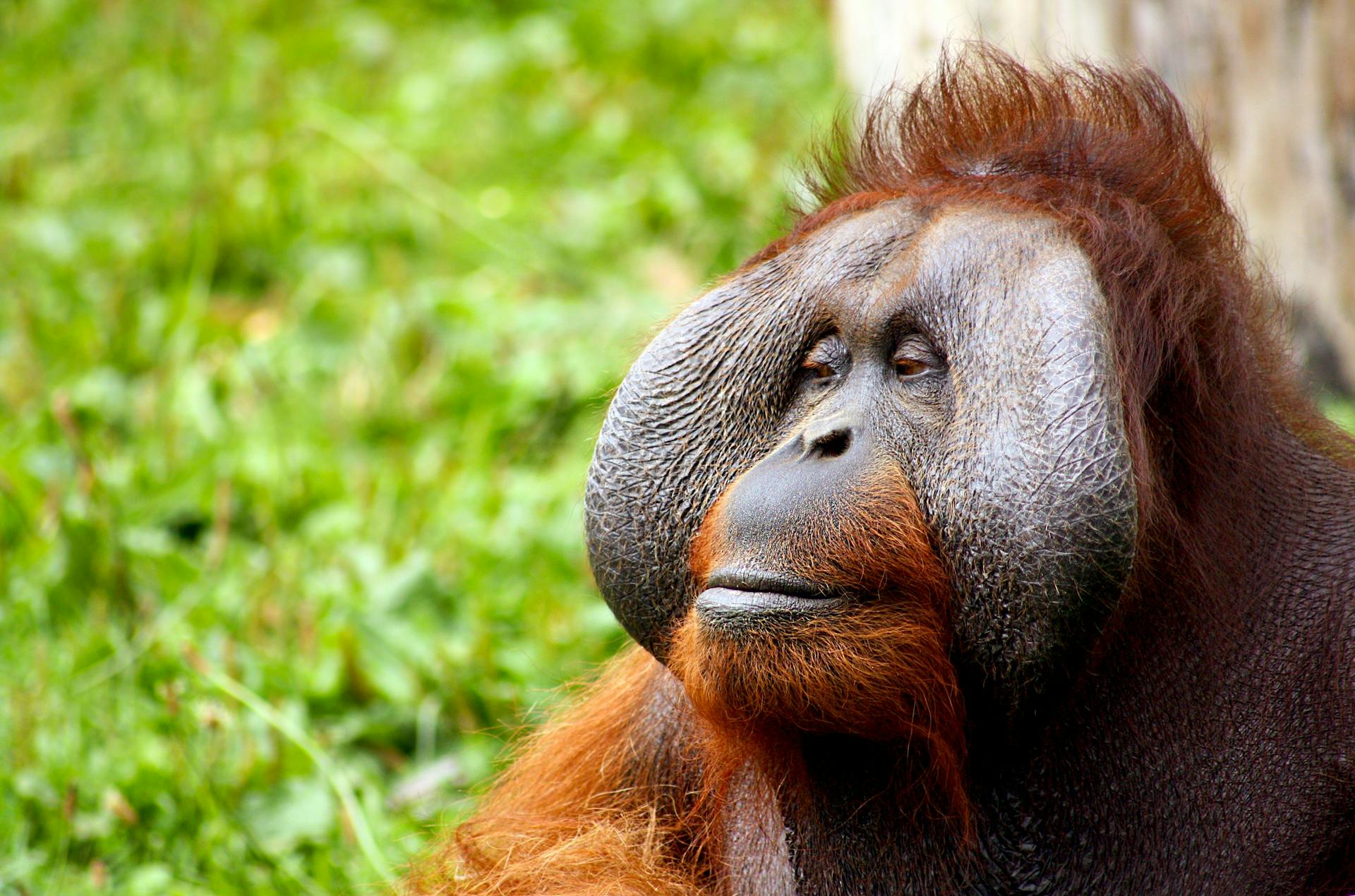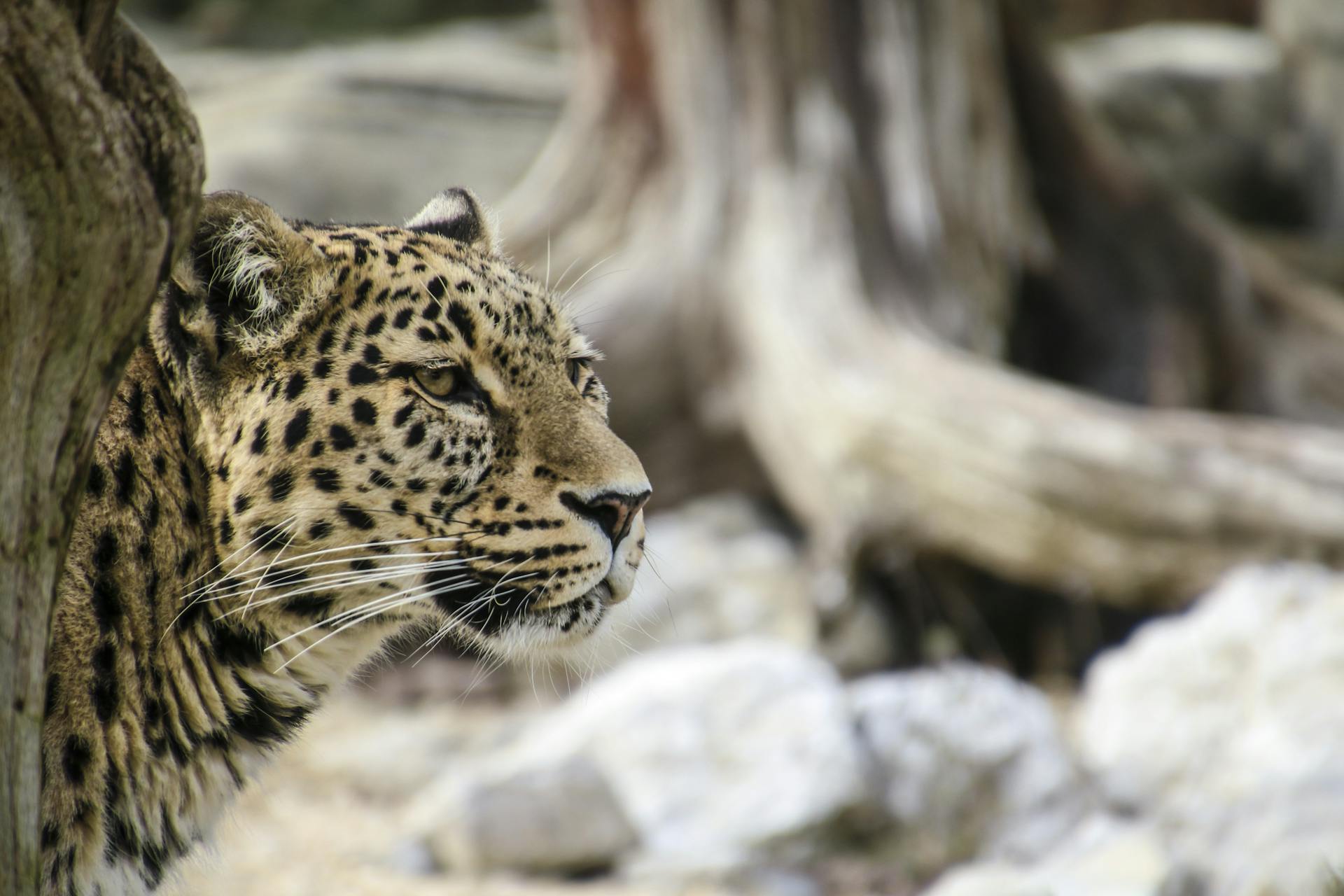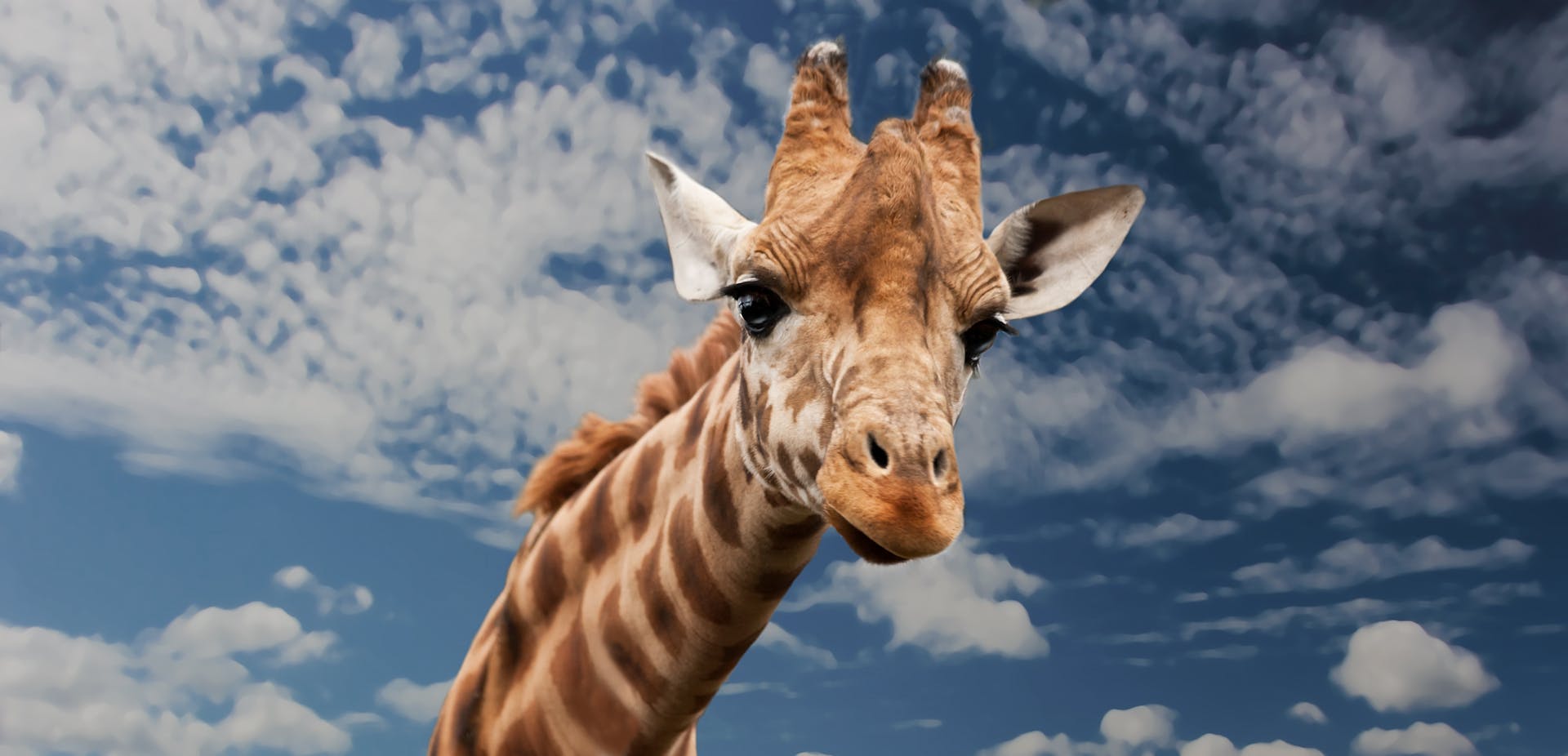In the heart of the lush, emerald rainforest, a lone orangutan gracefully swings from vine to vine, its rich red fur a fiery contrast against the vibrant green canopy. With every deliberate movement, it navigates the intricate network of branches, demonstrating a masterful blend of strength and agility. As sunlight filters through the dense foliage, the orangutan pauses, its deep-set eyes reflecting a sense of both wisdom and curiosity, a silent sentinel of the forest’s ancient rhythms.
Orangutans, the gentle giants of the rainforest, are not only captivating in their appearance but also crucial to the health of their tropical habitat. These remarkable apes are pivotal in maintaining the delicate balance of the rainforest ecosystem, contributing to forest regeneration through their role in seed dispersal and influencing the structure of the forest canopy. Despite their vital ecological role, orangutans face severe threats from habitat destruction and illegal wildlife trade, pushing them to the brink of extinction. Understanding and conserving these enigmatic creatures is not just a matter of preserving a species, but of safeguarding the intricate web of life they support. As we explore the world of orangutans, we uncover the urgent need to protect these magnificent beings and their irreplaceable rainforest home.
Species and Subspecies
Orangutans, our closest relatives in the great apes family, are found exclusively in the rainforests of Southeast Asia. There are three distinct species: the Bornean Orangutan, the Sumatran Orangutan, and the Tapanuli Orangutan. The Bornean Orangutan, the largest of the three, inhabits the island of Borneo and is known for its robust physique and orange-brown fur. The Sumatran Orangutan, native to the island of Sumatra, is smaller and has a more elongated face with a beard-like mane. The Tapanuli Orangutan, the most recently identified species, is found in the northern part of Sumatra and is distinguished by its unique genetic markers and distinct vocalizations. Each species has adapted to its specific environment but faces similar threats to their survival.
Physical Characteristics
Orangutans are remarkable for their impressive physical adaptations. Adults can weigh between 100 to 200 pounds, with males generally being larger than females. Their long, powerful arms, which can reach up to 8 feet in length, are essential for their life in the trees, allowing them to swing effortlessly through the canopy. Their reddish-brown fur, which varies in hue and length, provides camouflage among the dense foliage. This fur also helps to insulate them from the cool temperatures of the rainforest. Their prehensile hands and feet, with opposable thumbs and toes, enable them to grasp branches and manipulate objects with remarkable dexterity.
Behavior and Social Structure
Orangutans are known for their solitary nature compared to other great apes. Unlike species that form tight-knit social groups, orangutans typically lead a more solitary existence, with individuals coming together primarily for mating. Females tend to be more social, often seen with their offspring, while males are more reclusive, occupying larger territories. Communication among orangutans is complex, involving a range of vocalizations such as the long calls of males to establish territory and maintain social bonds. They also use various gestures and facial expressions to convey emotions and intentions, demonstrating their capacity for nuanced social interactions.
Role in the Rainforest Ecosystem
Habitat Maintenance
Orangutans play a crucial role in maintaining the health of the rainforest. Their diet consists largely of fruits, nuts, and seeds, which they help disperse across the forest. As they move through the trees, they inadvertently transport seeds away from the parent tree, aiding in forest regeneration. Their tree-climbing behaviour also influences forest structure by shaping the canopy and creating pathways for other species. By feeding on certain plants and trees, they help control vegetation growth, ensuring a diverse and balanced forest ecosystem.
Influence on Other Species
The presence of orangutans has significant effects on other wildlife in the rainforest. They are both prey and competitor to various species, and their feeding habits create openings in the forest canopy that benefit other animals. The dispersal of seeds by orangutans contributes to the overall biodiversity of the forest, supporting a range of plant and animal life. The complex interactions between orangutans and their environment help maintain the ecological balance of their habitat, demonstrating their integral role in sustaining forest biodiversity.
Conservation Challenges
Habitat Loss
The primary threat to orangutans is habitat loss due to deforestation. Large-scale logging and the expansion of palm oil plantations have led to the destruction of their rainforest homes, leaving them with fragmented and increasingly isolated habitats. This loss of habitat not only reduces their living space but also disrupts their access to food and other resources, making survival increasingly difficult.
Illegal Wildlife Trade
Orangutans are also victims of illegal wildlife trade, with poaching posing a significant threat. Young orangutans are often captured and sold as pets, leaving their mothers behind and causing severe psychological trauma. The illegal wildlife trade undermines conservation efforts and contributes to the decline of orangutan populations.
Conservation Efforts
Efforts to protect orangutans are multifaceted and include both in-situ and ex-situ strategies. Rehabilitation and reintroduction programs aim to care for orphaned and displaced orangutans, preparing them for life back in the wild. Habitat protection and restoration projects focus on halting deforestation and replanting degraded areas. Community involvement and education initiatives work to raise awareness about the importance of orangutans and promote sustainable practices that reduce the impact on their habitats.
Stories of Resilience
Famous Conservation Successes
Several conservation projects have made significant strides in orangutan protection. The Orangutan Foundation International, for example, has successfully rehabilitated and reintroduced numerous orangutans into their natural habitats. Success stories from these projects highlight the potential for positive change and the impact of dedicated conservation efforts.
Personal Accounts
Conservationists and researchers working with orangutans often share inspiring stories of their experiences. These accounts provide a window into the challenges and triumphs of working to protect and rehabilitate these incredible apes. Their personal stories underscore the dedication and passion required to make a difference in orangutan conservation.
How to Support Orangutan Conservation
Ways to Get Involved
Supporting orangutan conservation can take many forms. Donations to organizations dedicated to orangutan protection help fund essential projects and initiatives. Volunteering with conservation groups or participating in eco-tourism opportunities also provides valuable support and raises awareness about the importance of preserving orangutans and their habitats.
Advocacy and Education
Raising awareness about orangutan conservation is crucial for garnering support and driving change. Advocating for sustainable practices, such as choosing products that do not contribute to deforestation, and educating others about the plight of orangutans can make a significant impact. By promoting conservation and responsible consumer behaviour, we can help protect these magnificent creatures for future generations.
Conclusion
Orangutans are vital to the health and balance of the rainforest ecosystem. Their unique behaviours and ecological roles highlight their importance in sustaining forest biodiversity. As they face escalating threats from habitat loss and illegal trade, our efforts to support and protect them become increasingly critical. By taking action and supporting conservation initiatives, we contribute to ensuring a future where orangutans continue to thrive in their natural habitats, preserving the richness and vitality of the rainforests they call home.


